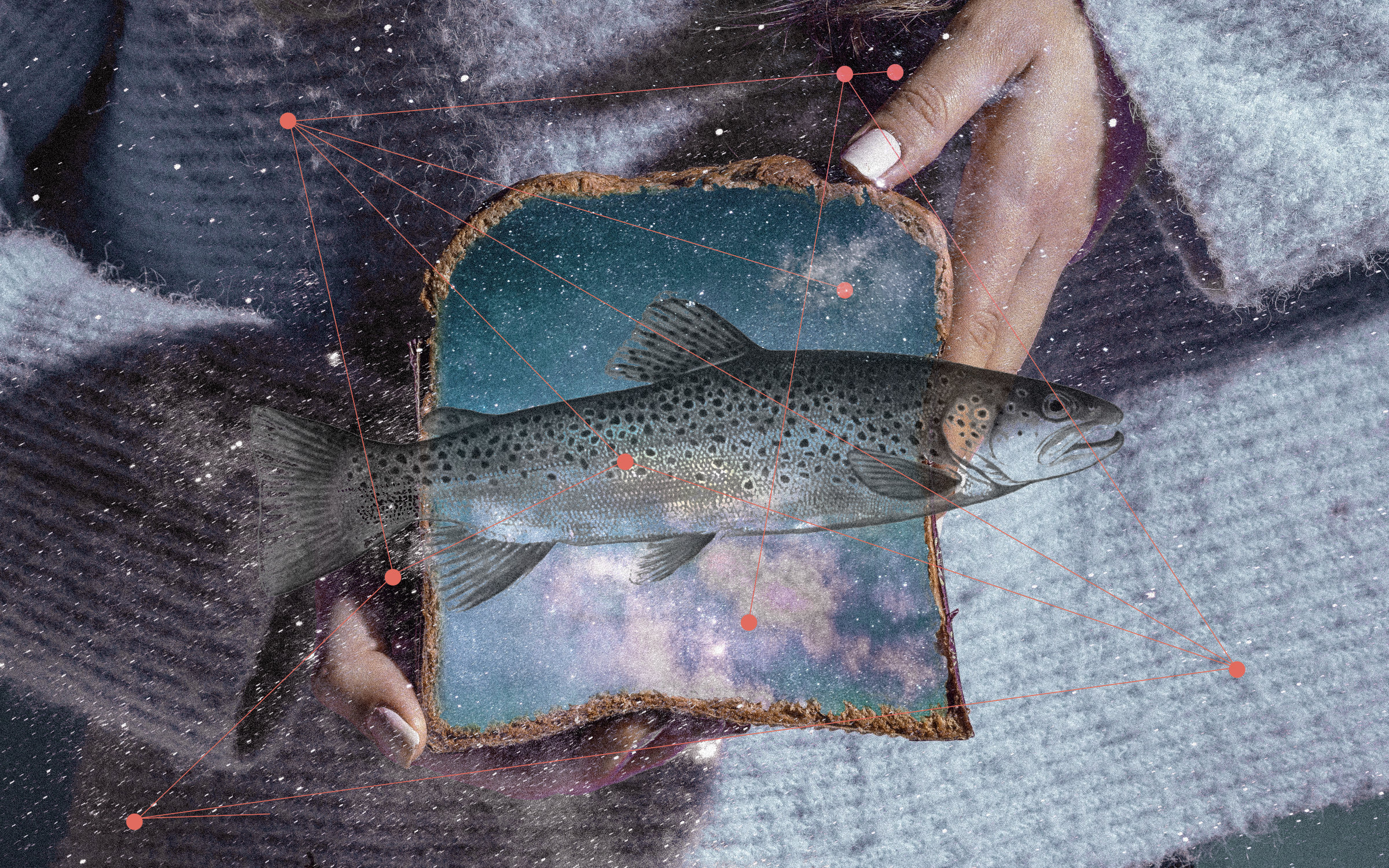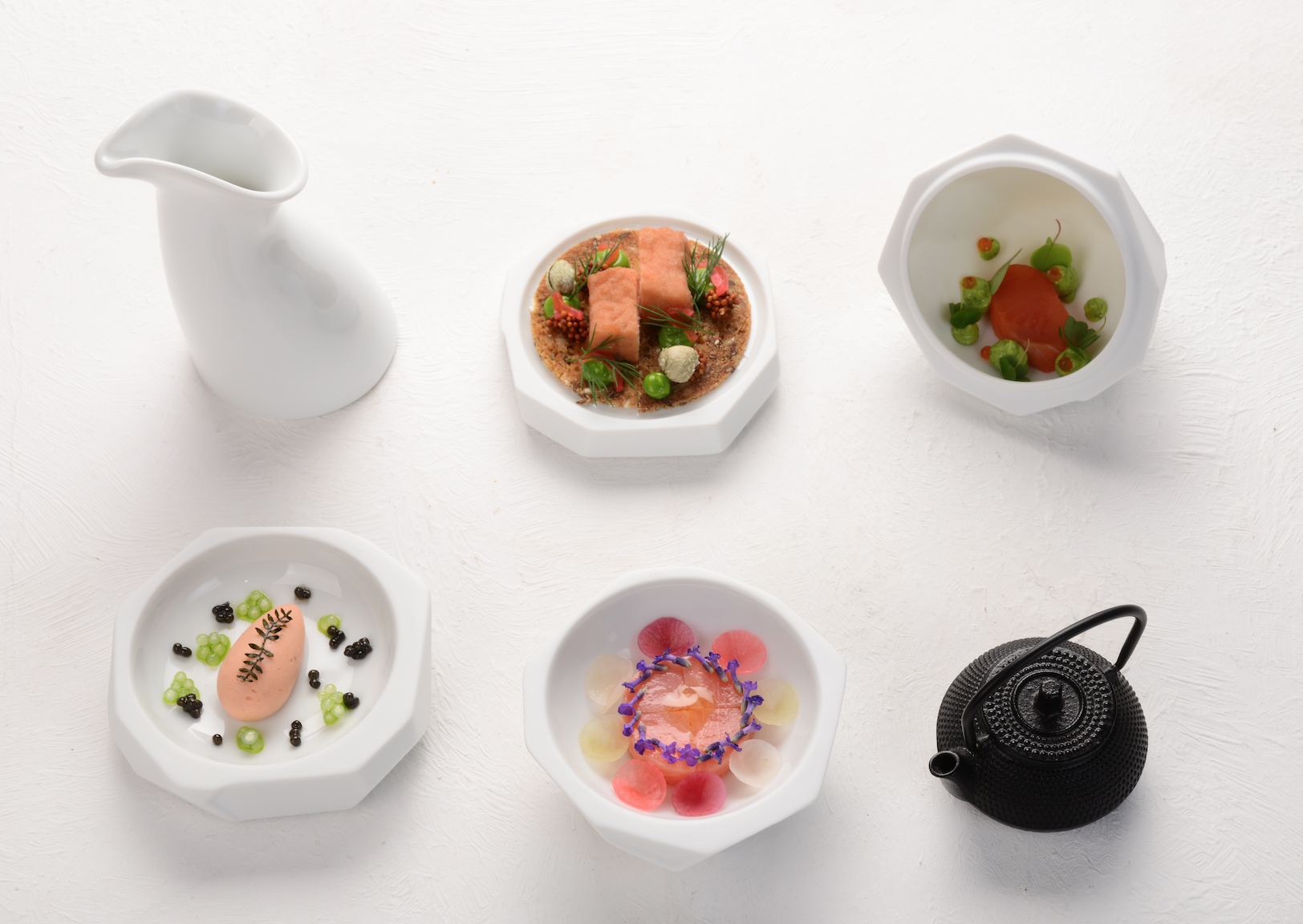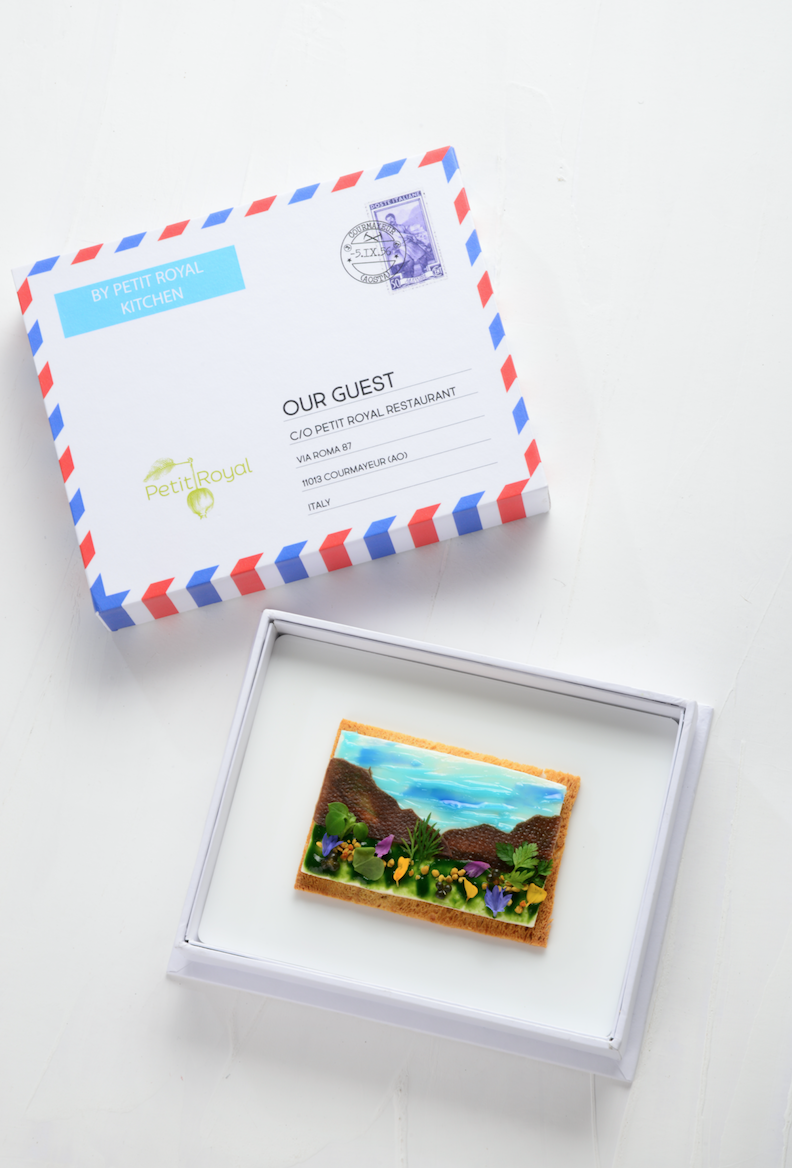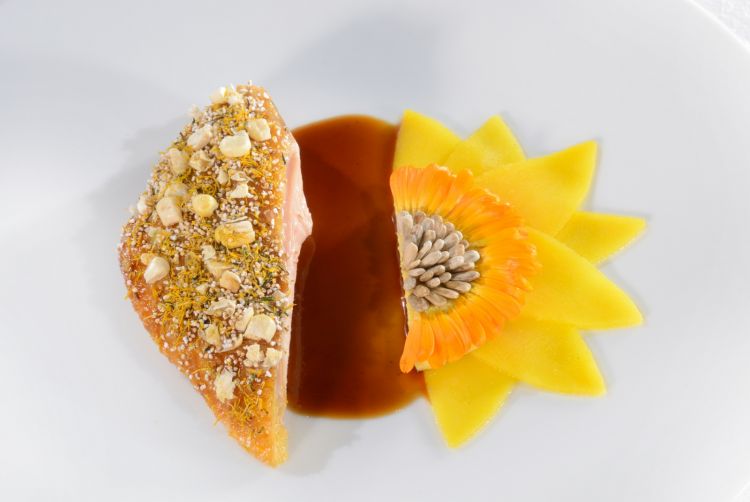The New Gastronome
Alchemy of Taste
When a Gastronome Goes to Therapy
by Claudia Gioia
by Claudia Gioia

Some of you may say trees, buildings, birds, walls, or – for the ones with poetic inner being – colors, shapes, and textures. Others may answer back by saying particles, atoms, neutrons, electrons. But, just a few of you would be part of the latter category. Despite physics teaching us that senses obstruct our perception of reality, for humans, appearance feels as real as the matter it is made of.
The world is a prominent place, and it’s essential to be able to navigate it. Humans use five senses to do this: touch, sight, hearing, smell, and taste.
Aristotle believed these senses were crucial for better understanding the universe and what surrounds us. The philosopher fiercely supported the importance of the senses to navigate the world and intellect as a way to transcend mere perception.
“It does not suffice in all cases to elucidate only the conceptual context of a dream content.
Often it is necessary to clarify a vague content by giving it a visible form.
This can be done by drawing, painting, or modeling.
Often the hands will solve a mystery that the intellect has struggled with in vain.”
In his “Practice of Psychotherapy” (1954), Carl Gustav Jung underlines the interdependence between senses and intellect, how one cannot exist without the other. Once again, the syntagm is not intended as a casual choice of words. In “Psychological Types,” first published in 1921, Jung introduces two axes as cognitive functions: Sensing-Intuition and Thinking-Feeling how humans process information and interpret life.
A. D V. E. R. T. I. S. I. N. G
Rational against irrational.
Our brain is divided into two hemispheres: the left, which processes information logically, and the right, which processes information intuitively. The left hemisphere of our brains is responsible for Thinking and reasoning. It evaluates situations with ratio and consistency. We use it to solve math problems, come up with lists, or read a book. It’s what we use when we’re writing this article! The right hemisphere of our brains operates differently than the left hemisphere. Instead of using logic to figure things out, it accumulates information by accident. This means it is much more likely to be involved in something like drawing or singing than doing math problems or reading books.
Art against science.
Just think about food. While cooking, recipes are a historical source susceptible to interpretation, a means to create new dishes. Baking, on the other hand, is methodical rigor and precision.
So, what happens when cooking and baking meet halfway?
Imagine a cloudy afternoon, bored, scrolling through your Instagram feed, when the picture of a pasta roll captures your attention. Mainstream? Maybe. But how many cannelloni do you know that esthetically remind you of Missoni’s iconic Put-Together pattern? I can only think of this one. This is how I met Paolo Griffa, a native of Piedmont and defined by some of the most distinguished gastronomic critics as the Italian culinary enfant prodige.
Pastry Chef turned Chef; he strives for wonder by combining the cosmos and the chaos of his culinary soul. The outcome is a bridge between our logical and emotional sides. The following dishes can be intended as a hypothetical tasting menu specifically intended to challenge our ability to physically and mentally interpret food.

[Thinking] brings the contents of ideation
into conceptual connection with one another
We can all agree that until teleportation becomes a reality, palates travel faster than we will ever do. And cooks have the power to bring the world to our table.
Morgex trout finds its way to our tables, served in a porcelain casket divided into four levels. From the herbal marinade typical of the Scandinavian tradition to the Danish reminiscence of the deep-fried trout in carpione over smørrebrød. From white wine sauce and caviar, fellows of an opulent French quenelle, to the South-American ceviche and its candid elegance. An intellectual coast-to-coast from the North to the South of the world.

Feeling is a kind of judgment…
Valuation by feeling extends to every content of consciousness
“You’ve got mail!”
I am here again asking you to close your eyes, dig into your memories, and find an image that answers the question: what does summer look like to you? Do you have something in mind? Good. Set it aside and try this one: uncontaminated nature, crystal blue sky overlooking a flowery meadow. Is it close to your idea? Probably, yes.
Now, try to answer this: what does your summer taste like? Peach? Saltiness? Grandma’s biscuits? Answers may be many, but they will all have a fil rouge: being personal. Paolo Griffa takes it personally as well. His summer reflects a perfect Aosta Valley day, and with the postcard, he gives us a chance to bite into it. It tastes of toasted bread, fresh cheese, chamomile, and yarrow.
A. D V. E. R. T. I. S. I. N. G

Everything is seen or heard to the physiological limit.
Whoo! Wait, what? Igloo? In Valle d’Aosta? The answer is “yes”; you can come across igloos there. However, you should be ready to be surprised. Valle d’Aosta is indeed home to igloos, but not as commonly pictured. They are small and spontaneous. And what happens if you look under them? What if you break one? You will probably find out that they are home to rabbits and – why not – squirrels. They smell of juniper and game. So, accept Chef’s invitation to take the wood hammer next to you and break the casket to personally perceive the boar, the celeriac, and the mustard leaves. Just as if we were the ones walking into the woods looking for rosehip.

Photo credit:_ Identità Golose
[Intuition] mediates perceptions in an unconscious way
And has the character of being given
Have you ever heard of Van Gogh? Sorry, silly question. Of course, you have. He is the guy that cut off his ear, after all. However, he is also one of the finest painters to have ever walked on this planet. His command of color? The most magnificent. He transformed the pain of his tormented life into ecstatic beauty. Painting pain is easy, but to use this pain to portray the beauty of our world…
Sunflowers symbolize joy, gratitude, and fidelity; by painting them, Van Gogh reflected his longing for happiness. The painter used to look for bliss as the flowers used to look for the sun. Van Gogh now becomes the sunflower, while Paolo Griffa picks up the brush. The Chef doesn’t pretend to understand the torment Van Gogh was going through entirely. Instead, he celebrates how he was able to turn his darkness into something bright and joyful. The Guinea fowl shines through a sunflower made of corn, saffron potatoes, marigold, and sunflower seeds. The painting becomes a dish. The dish becomes a painting.
In the end, it is all coming full circle. Reaching his maturity apex, the Chef simultaneously embodies two figures: the craftsman and the artist. The former knows the chemistry of the ingredients. The latter interprets the world through the lens of his imagination. When defying where one ends and the other begins is not possible anymore, the created piece of work does not just please the senses with its being harmoniously beautiful but also with the technical understanding used to bring it to life.
The opinions expressed in the articles of this magazine do not necessarily represent the views of The New Gastronome and The University of Gastronomic Sciences of Pollenzo.